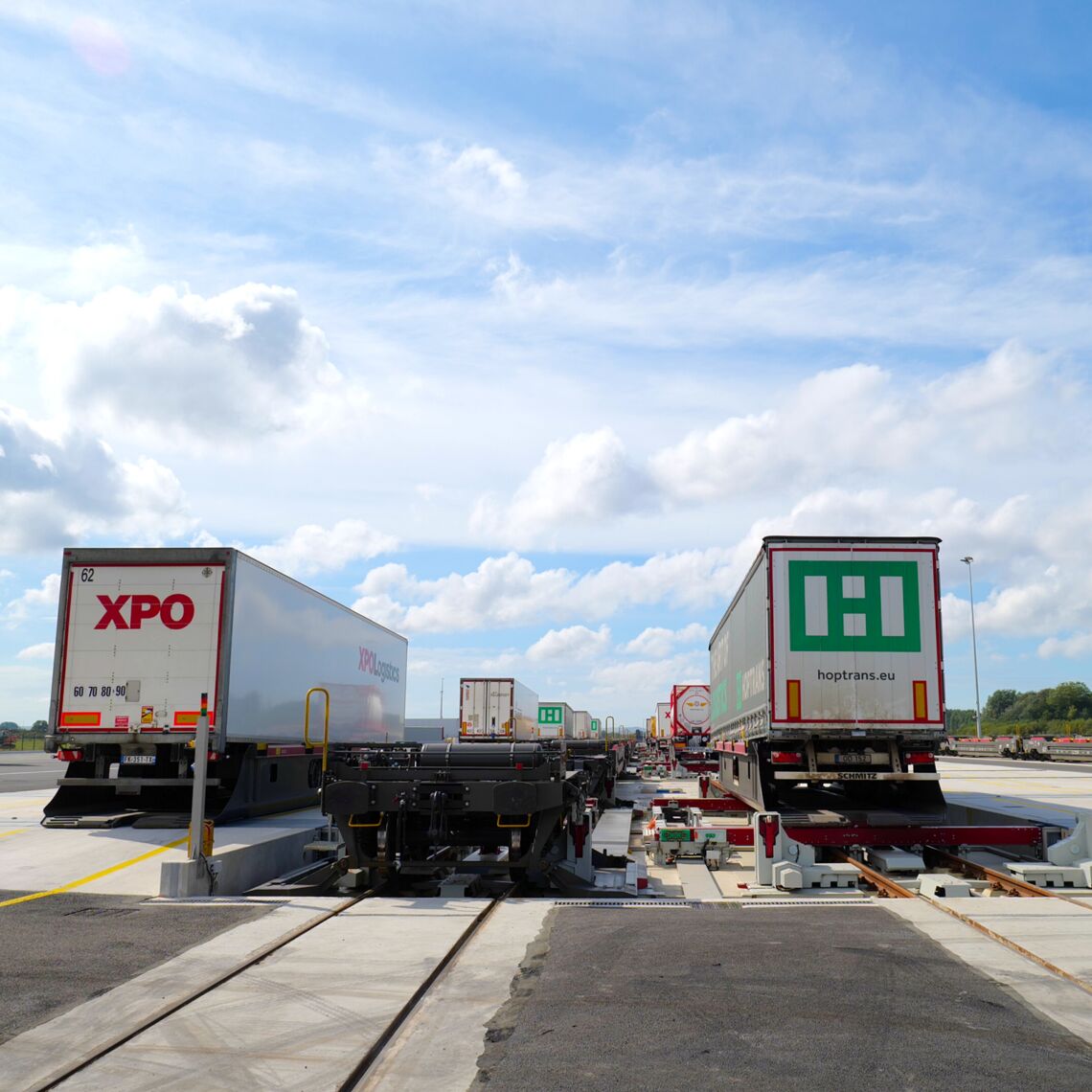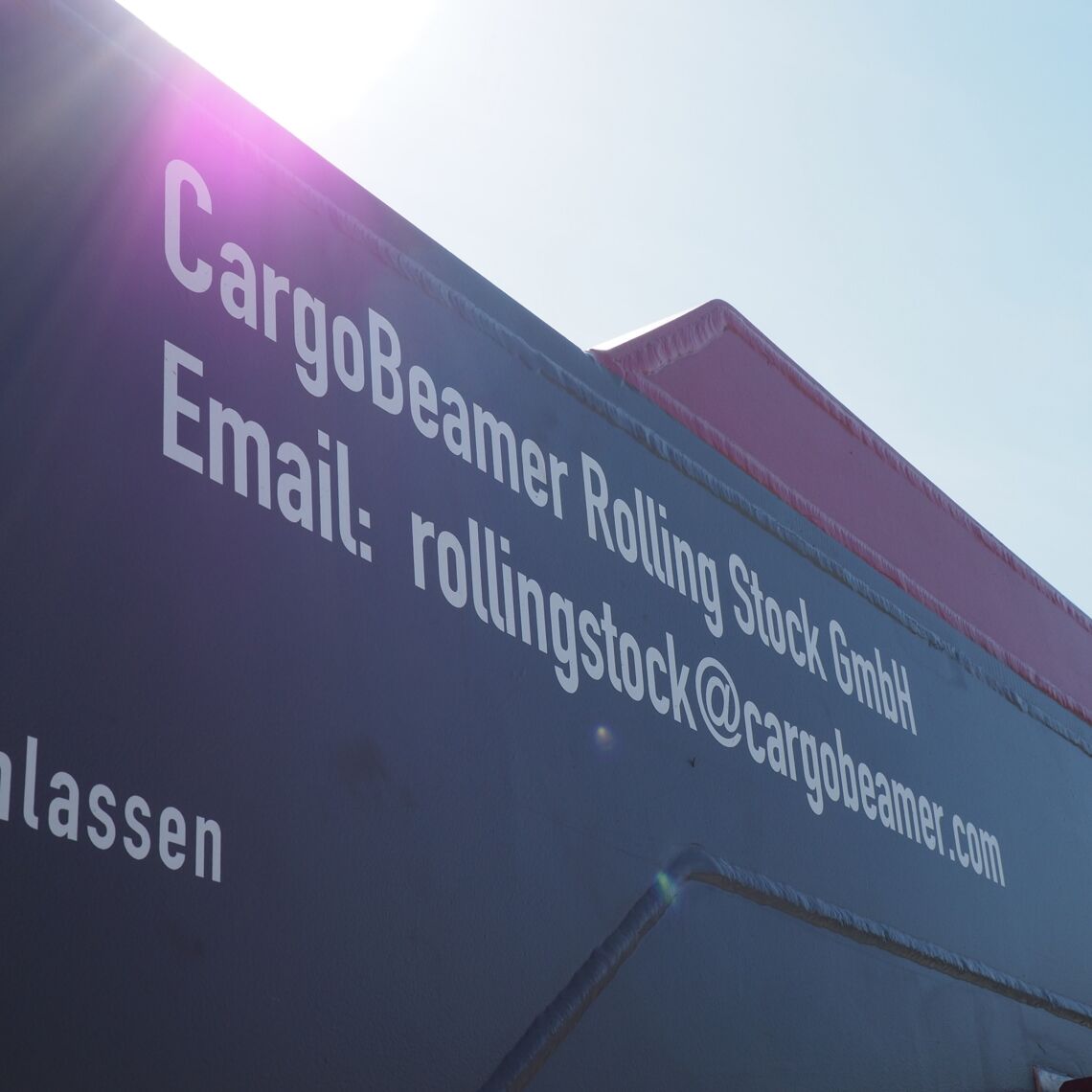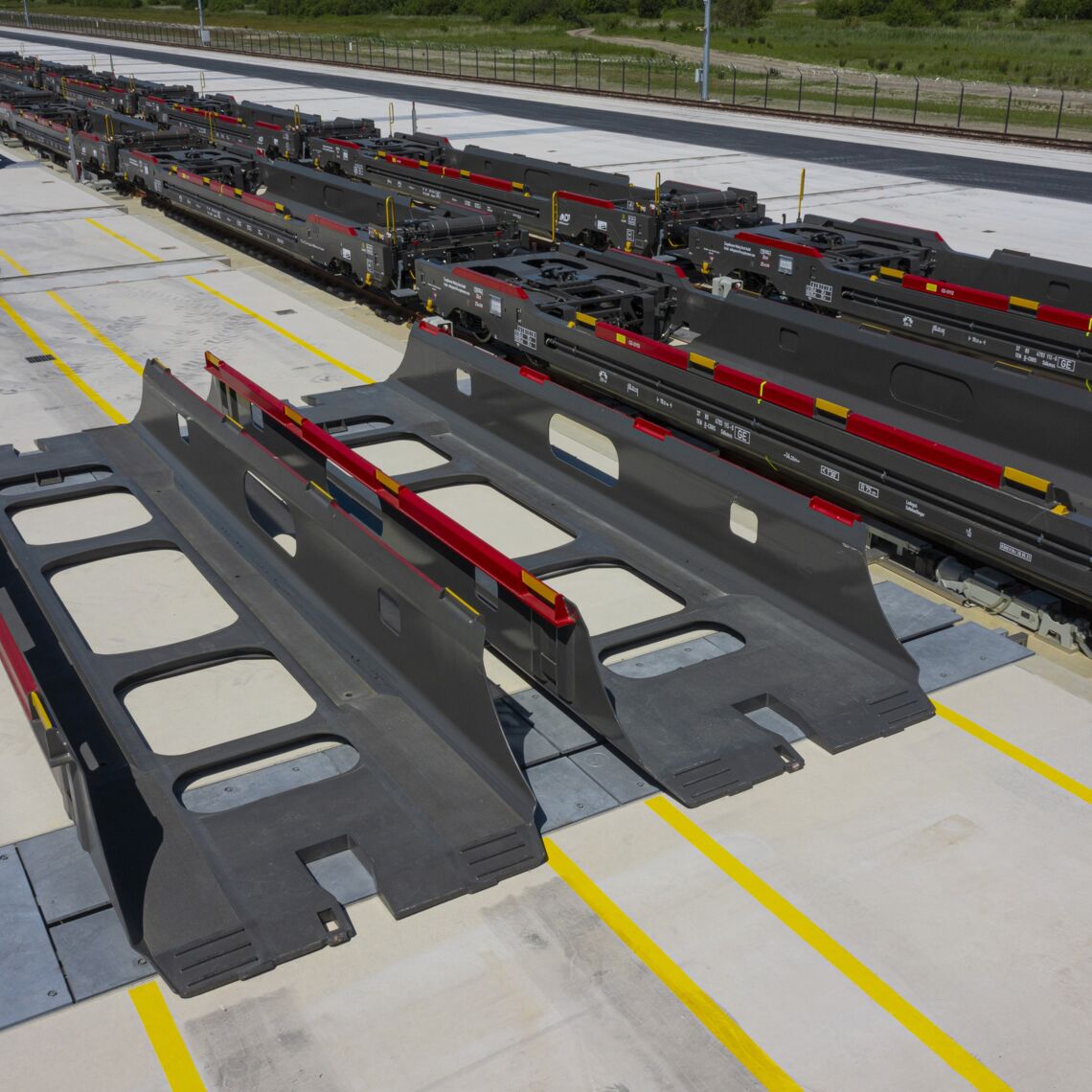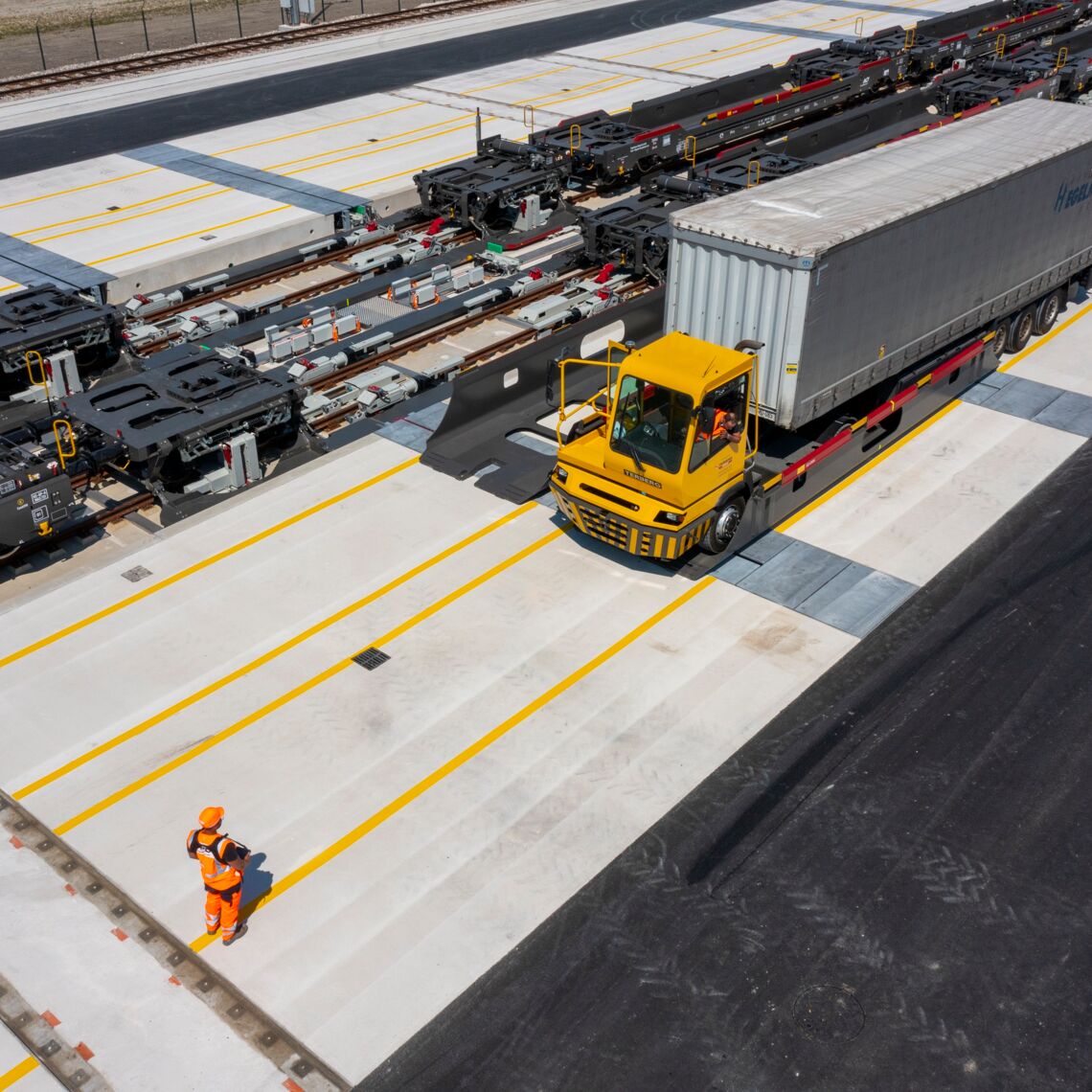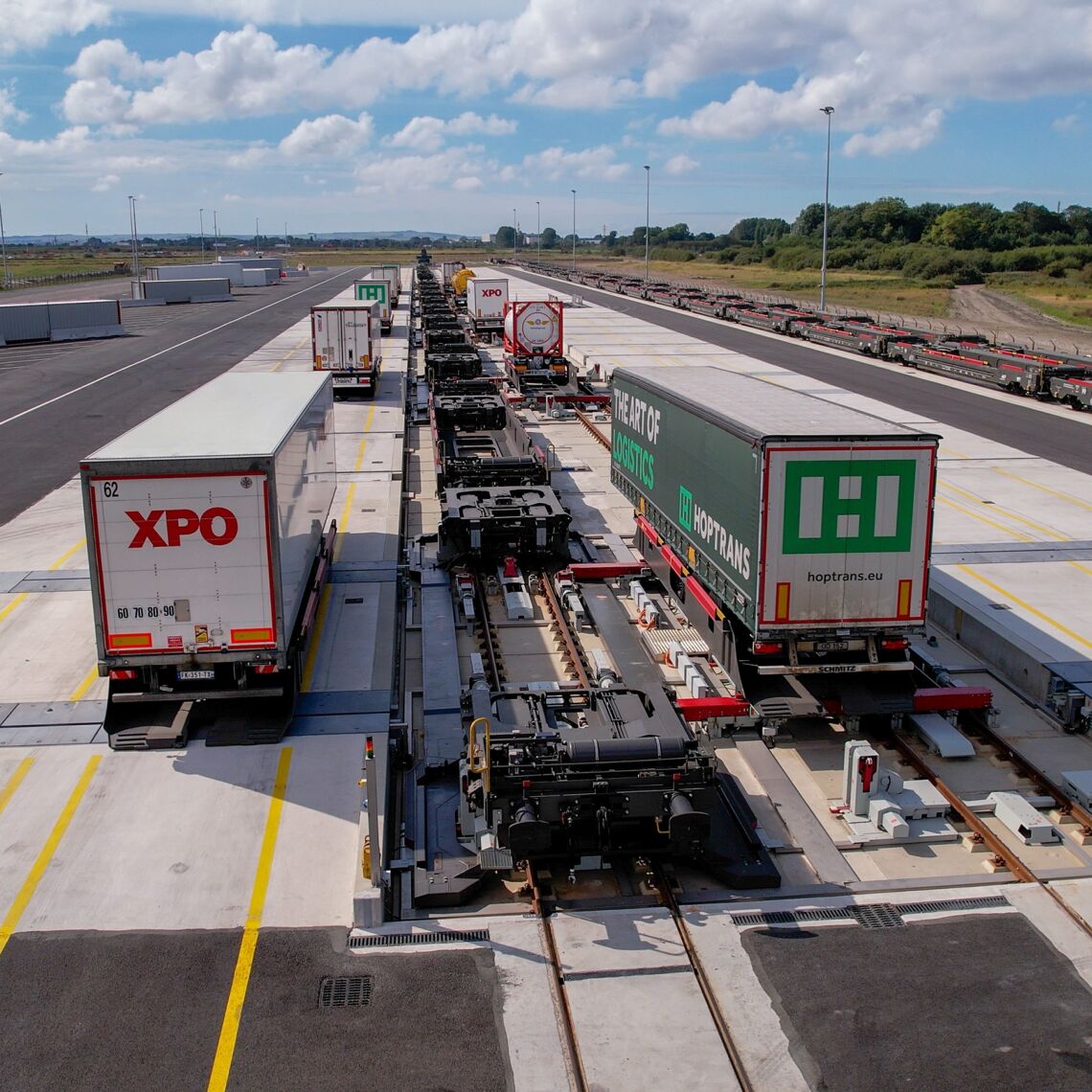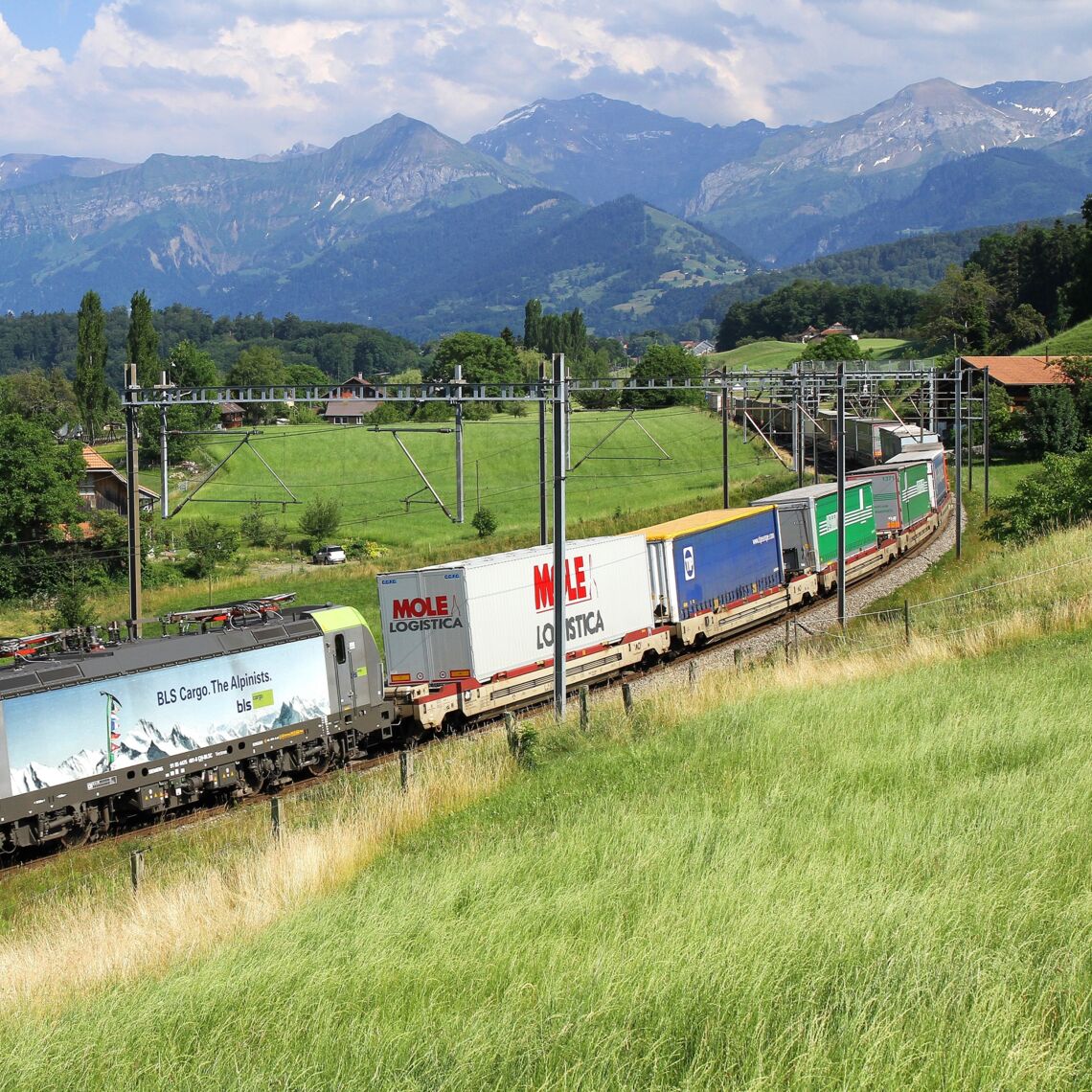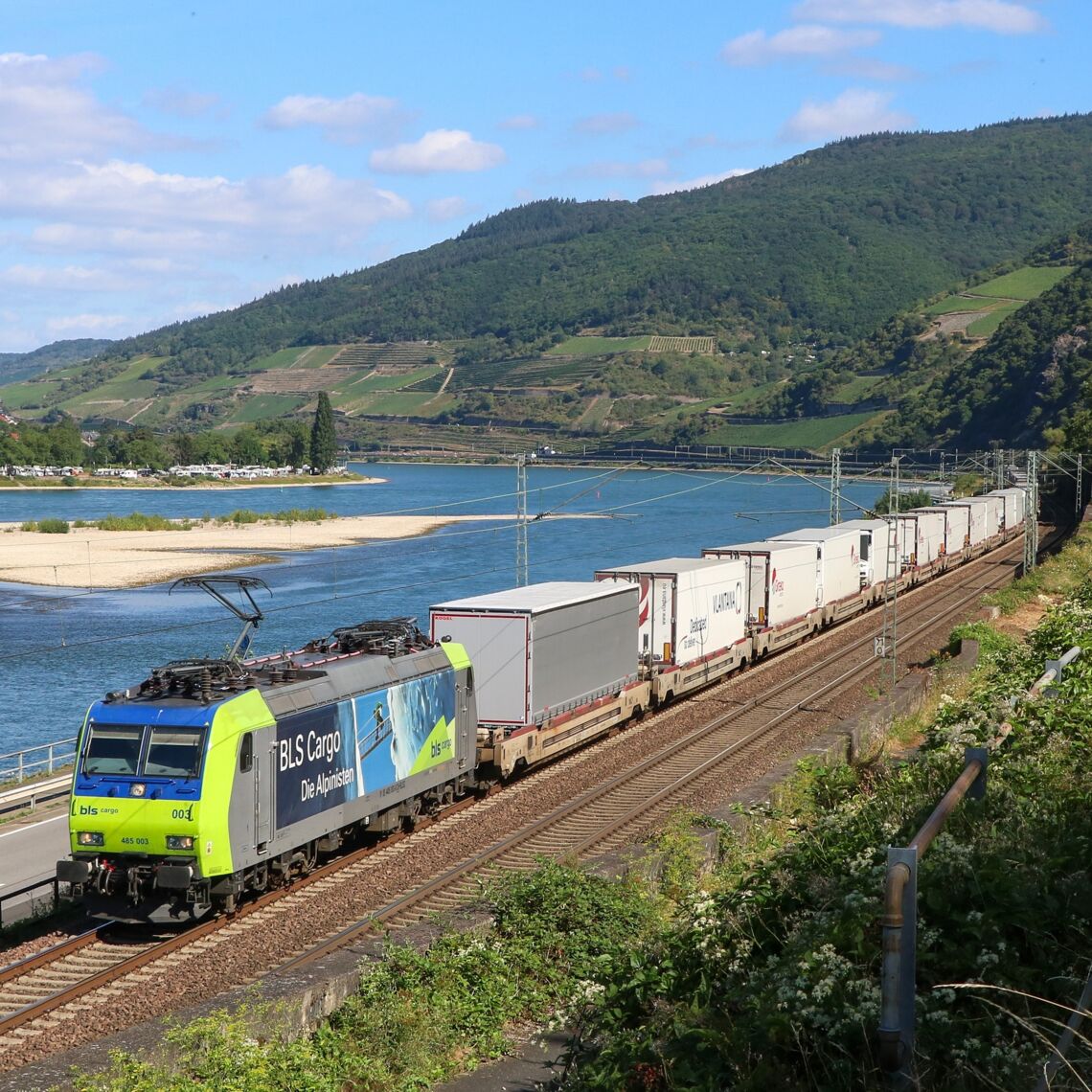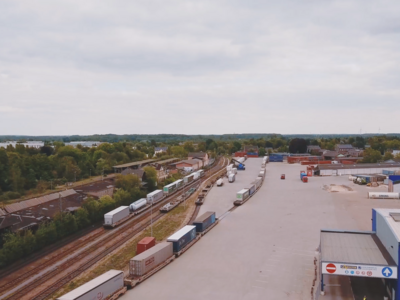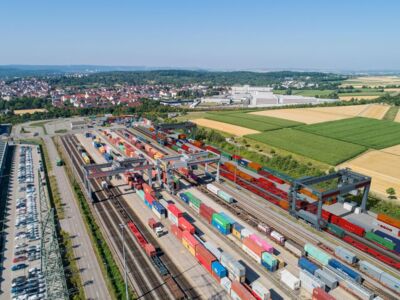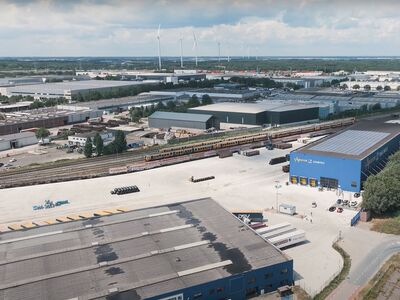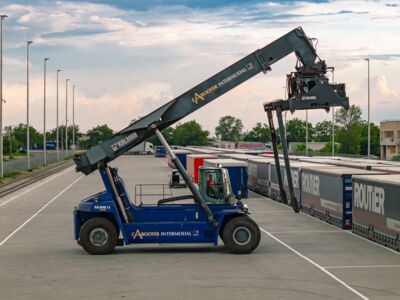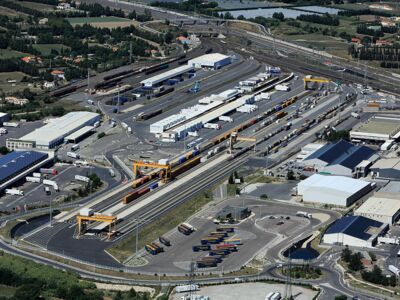Technical Aspects
Modifying a semi-trailer for conventional craning is expensive, as special biting edges and reinforcements have to be applied.
This is at the expense of payload (200-500 kg) and also shortens the life of a trailer. All trailers also need separate authorisation for rail transport (codification or ILU code) and the risk of damage is high. Walking floor trailers simply cannot be craned.
Overall, the time needed for craning all trailers currently in use would be a factor that proves this idea is not economically feasible.
Yes, CargoBeamer has the potential to get freight, which is mainly done with non-craneable trailers, onto the rails as any kind of trailer can immediately get on board without any additional modification or certification.
No, the market trend has been towards standard semi-trailers without biting edges necessary for craning for four decades.
No, CargoBeamer works within the permitted track profiles. CargoBeamer wagons have met admission requirements for freight wagons in accordance with the ‘Technical Specifications for Interoperability (TSI)’.
Unlike conventional craning, CargoBeamer transships its pallets with the trailers horizontally all at the same time.
More than 90% of all semi-trailers, MEGA trailers, silo and refrigerated trailers in the EU region are not craneable.
The CargoBeamer system makes all trailers craneable, without modifications or additional equipment.
Quite the opposite. The transportation is extremely gentle on frames, brakes, axles, tyres and outriggers as the trailer is mounted on the pallet just like it is on a truck and the wheels don't move.
Yes, the wagons can be incorporated into any freight train.
Yes, the pallets are craneable.
CargoBeamer terminals are modular and incredibly space-saving. Where there's less space, the module works successfully using one side on only one parking track. The width of the module is then less than 16 metres. They are individually adaptable to the conditions.
CargoBeamer currently operates with three staff members per shift at a terminal, who oversee the loading of pallets and to initiate the transshipment. A wagon overseer carries out the technical inspection just like for any freight wagon and checks the secure king pin connection of the trailers in the wagons. However, the number of staff members depends on size and equipment of each terminal.
The truck driver can leave the terminal immediately after loading or unloading.
1.2 kWh are used for loading and unloading the basket with one semi-trailer.
CargoBeamer saves approximately 66% energy as opposed to road transport.
Depending on the lane, CargoBeamer reduces CO2 emissions by around 75%, that's more than half as opposed to road transport. Using one train and one year as the basis for calculation, CargoBeamer prevents around 3,500 tonnes CO2 from polluting nature.
CargoBeamer even works in extreme conditions such as heat, snow and ice, as it doesn't use any weather-sensitive technology. It is simple, robust and secure. Even strong winds such as in a crane terminal do not interfere with operations.
No. The modules work independently of each other, meaning that everything else carries on.
The CargoBeamer system needs less than 20 minutes to load and unload a whole 700-metre-long train with 36 wagons and up to 72 semi-trailers in parallel.
The maintenance and repair costs correspond to those of conventional pocket wagons.
CargoBeamer has a cost-benefit ratio of 7:1, that's really good. Each euro invested in CargoBeamer results in a benefit of 7 euros – for you, for society, for everyone.
